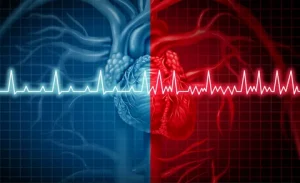Introduction: Recognizing Critical Health Symptoms
In the realm of health, awareness is paramount. Recognizing symptoms of critical health issues can be lifesaving. This article delves into four significant health concerns and their associated warning signs. By understanding these signals of danger, individuals can take proactive steps towards seeking medical attention and improving their overall well-being. Explore More About (Food-Related Illness)
Heart Attack: Unveiling the Silent Killer
Understanding the Basics
A heart attack, also known as myocardial infarction, occurs when blood flow to a part of the heart is blocked for an extended period, resulting in damage to the heart muscle. While chest pain is a classic symptom, heart attacks can manifest differently in men and women.
Warning Signs
- Chest Discomfort: The most common symptom is discomfort or pain in the chest, often described as pressure, tightness, or squeezing.
- Upper Body Pain: Pain or discomfort may radiate to the arms, back, neck, jaw, or stomach.
- Shortness of Breath: Difficulty breathing or feeling short of breath, which may occur with or without chest discomfort.
- Other Symptoms: Nausea, lightheadedness, cold sweats, and fatigue can also accompany a heart attack.

Stroke: Act Fast, Save a Life
Understanding the Basics
A stroke occurs when the blood supply to part of the brain is interrupted or reduced, depriving brain tissue of oxygen and nutrients. This can result in brain cell death and potentially permanent damage.
Warning Signs
- Facial Drooping: Sudden weakness or drooping on one side of the face.
- Arm Weakness: Inability to lift one or both arms, or weakness in the arms.
- Speech Difficulty: Slurred speech or difficulty speaking or understanding.
- Time to Call Emergency: If any of these symptoms are observed, it’s crucial to seek immediate medical attention. Remember the acronym FAST: Face drooping, Arm weakness, Speech difficulty, Time to call emergency.

Diabetes: Managing the Sugar Spikes
Understanding the Basics
Diabetes is a chronic condition characterized by high levels of glucose in the blood. It can lead to serious complications, including heart disease, stroke, kidney failure, and blindness.
Warning Signs
- Frequent Urination: Increased urination, especially at night.
- Excessive Thirst: Feeling constantly thirsty and drinking more fluids than usual.
- Unexplained Weight Loss: Despite eating more, experiencing sudden weight loss.
- Fatigue: Feeling tired and lethargic, even after adequate rest.
- Blurry Vision: Vision may become blurry due to high blood sugar levels.

Cancer: Detecting the Enemy Within
Understanding the Basics
Cancer is a group of diseases characterized by the uncontrolled growth and spread of abnormal cells. Early detection and treatment are crucial for improving outcomes and survival rates.
Warning Signs
- Unusual Lumps or Swellings: New lumps or swellings in the body, especially in the breasts, testicles, lymph nodes, or other areas.
- Changes in Moles: Changes in the size, shape, or color of moles or skin lesions.
- Persistent Cough: A cough that doesn’t go away or worsens over time, especially if accompanied by blood.
- Unexplained Weight Loss: Significant and unexplained weight loss without changes in diet or exercise routine.
- Changes in Bowel Habits: Persistent changes in bowel habits, such as diarrhea, constipation, or narrowing of stools.

Symptoms of Critical Health Issues
| Health Issue | Common Symptoms |
|---|---|
| Heart Attack | Chest discomfort, upper body pain, shortness of breath, nausea, lightheadedness, cold sweats, fatigue. |
| Stroke | Facial drooping, arm weakness, speech difficulty. |
| Diabetes | Frequent urination, excessive thirst, unexplained weight loss, fatigue, blurry vision. |
| Cancer | Unusual lumps or swellings, changes in moles, persistent cough, unexplained weight loss, changes in bowel habits. |
Conclusion
Recognizing the signals of danger associated with critical health issues is paramount for early detection and timely intervention. By understanding these symptoms and taking proactive steps, individuals can safeguard their health and well-being. Remember, bold action in response to warning signs can boldly impact outcomes and save lives.












